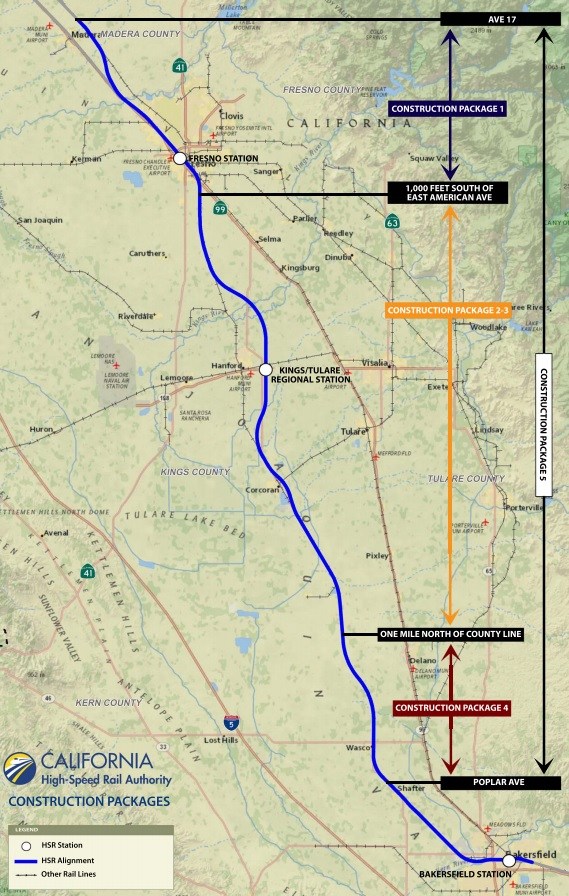At its January 16 board meeting, the California High-Speed Rail Authority announced $2.8 billion in cost overruns on its Central Valley sections. Central Valley construction is already underway on 119 miles of track between Madera and Bakersfield. In 2016 the Central Valley segment was anticipated to cost $7.8 billion. This number has been revised upward to $10.6 billion, a 36 percent overrun.
CAHSR staff cited several factors behind the increased cost estimate: intrusion barriers, right-of-way acquisition costs, delays, agreements with third parties (including cities and counties), utility relocation, and more.
It will probably come as no surprise to Streetsblog readers that numerous media outlets had a field day criticizing high-speed rail.
The cost overruns took media attention away from what might have been a big story: the hiring of new CEO Brian Kelly. Kelly had been serving as the head of California State Transportation Agency since it was formed in 2013.
Given the Los Angeles Times' history of bias against high-speed rail and national trends where media quotes transit critics more than highway critics, Times coverage of the overruns should be taken with a grain of salt. Last week's Times article focuses on the project construction consultant's "worst case scenario" remark. The Times then portrays these cost overruns as an "existential moment" for CaHSRA. The article cites longtime CaHSR critics Assemblyman Jim Patterson, Elizabeth Alexis, and James Moore. Moore was also interviewed by KPCC, where he advocated for stopping HSR construction because the state's high-speed rail project "will never pay for itself" which is a standard that the media never seem to apply to highway construction.
Obviously, cost overruns are bad. Limited transportation dollars will not go as far as was anticipated. But are these overruns unique to rail?
According to CityLab, studies have found that the overwhelming majority of mega-projects experience major cost overruns: "University of Oxford scholar Bent Flyvbjerg analyzed 258 transportation infrastructure projects from around the world [mostly from the 1980s-1990s] and found that nine in ten exceeded their cost estimates. The overruns were greater on rail projects than road projects but averaged 28 percent across the board."
UC Berkeley's Karen Frick also studies mega-project cost overruns, famously profiled the escalating cost for the East Span of the Oakland Bay Bridge. That project ballooned from $250 million to $6.5 billion.
According to Frick and Flyvbjerg, major cost overruns are common for various types of projects - rail, highway, water, etc. - and common all over - from L.A. to Seattle to Boston to New York City.
A question that deserves more scrutiny is how the media portrays cost overruns. As noted, the L.A. Times provides plenty of dire coverage for CaHSR overruns.
The Times is also pretty diligent in reporting on cost overruns for L.A. Metro's rail projects, including the Regional Connector subway, now projected to cost $1.75 billion, which is 28 percent over budget. Times Regional Connector coverage quotes the above-mentioned rail critic Moore, with Metro representatives providing a counterpoint.
Compare this to the Times coverage of the widening of the 405 Freeway through the Sepulveda Pass. The 405 project cost $1.6 billion, which was 55 percent higher than its original budget. The Times' 2013 article quoted suffering drivers awaiting too-long-delayed congestion relief. A 2016 wrap-up article portrays disputes between Metro and its contractor.
Times highway project coverage is nowhere near as ferocious and incessant as its coverage of rail. The media's frequent windshield perspective never seem to questions whether highway project cost overruns present an "existential moment," as the Times put it for CaHSR, for projects that expand car capacity.






